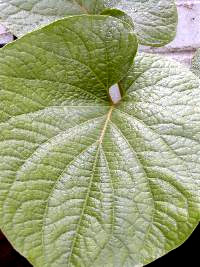| |
|
|
| |
|
|
| |
|
|
| |
| |
SAFE FOOD & DRINK |
|
| |
“Montezuma's revenge”
|
|
is worldwide known as part of traveling in Mexico. Nevertheless, if you take some precautions you can avoid stomach infections.
As a rule of thumb, it is always better to avoid drinking tap water, unless it is safely boiled or filtered. As well, it is not safe to eat raw leafy greens or drink prepared soft drinks (“aguas frescas”). This can be done safely only at good restaurants. Anything raw should be peeled, or washed with bottled water. All restaurants serve excellent lemonade ("limonada mineral” or “limonada preparada") made with sparkling water ("agua mineral"), lime juice, and a little sugar. Unless you are in a good restaurant, avoid "limonada natural" (lacking bubbles). For the same reason, in some places it is better to order drinks without ice ("sin hielo"). |
|
|
| |
|
| |
|
| |
TRADITIONAL OAXACAN FOOD |
|
| |
| |
Oaxacan cuisine is one of the richest in Mexico and in the world. In the Oaxacan cuisine, prehispanic ingredients are fundamental. Books on Oaxacan dishes can be found in local museums or local book stores. However, here we present a brief introduction to the main dishes that you should try to taste. |
|
|
| |
|
“Mole”
is probably the biggest attraction regarding exotic food. Mole is a generic name for dishes that use a “sauce” made with a combination of several chilies and tomato or tomatillo. Mole can be very hot (“picante”, spicy) or mild. In Mexico, mole is prepared and consumed mainly in the central part of the country. There are many recipes for mole, almost as many as the number of families that made it from scratch. Made from scratch, mole can be extremely elaborated, since it includes dozens of ingredients that need to be ground in a mill. Nevertheless, mole can be purchased already prepared, in the shape of a paste or dried-dust that normally it is dissolved in chicken broth. The most common and perhaps must well-known has as key ingredient “chocolate” (cocoa), however, in Oaxaca there are seven different types of mole that are equally important in the traditional cuisine. From the most elaborated one to the simplest, those seven types are mole negro (“black mole”, the one that uses cocoa), mole amarillo (“yellow”), mole coloradito (“little red”), mole almendrado (with almonds), mole chichilo (a local name without translation), mole verde (“green”) and mole colorado (“red”). In the same way as wine tasting is a tradition in wine countries, mole tasting is also practiced in several regions of Mexico. Oaxaca City has several restaurants that offer mole tasting. If you like spicy food, you should do it! |
|
| |
|
|
|
| |
| |
| |
| |
That is the case of “quesadillas”, which are tortillas (or in the central or southern part of the country more often corn tortillas and less frequently flour tortillas) folded and filled with several ingredients, such as cheese and “epazote” (the leaves of Chenopodium ambrosioides), “hongos” (mushrooms or other fungi), “flor de calabaza” (Squash Blossoms), “cuitlacoche” (corn smut), etc. Other dishes are equally important in the Oaxacan cuisine. They include different types of “chiles rellenos” (filled chilies). Chiles rellenos can be extremely hot, but if you like spicy food they are definitively recommended. In this dish, different types of chilies are filled with ground meat, chicken or cheese and prepared in different ways, most frequently covered with egg and flour and fried. Oaxaca produces a popular mild cheese, known in the region as “quesillo” and in other parts of the country as “queso oaxaca”, which is presented in folded stripes in the shape of a ball. “Quesillo” is commonly used in several dishes, some of them are very simple and popular. |
|
| |
| |
|
|
|
“Tlayudas” are crispy gigantic corn tortillas with a layer of beans, “quesillo”, tomato, avocado and beef or chicken.
“Tamales” are corn flour filled with different ingredients, wrapped with corn bracts or banana leaves, and cook in vapor. Tamales are very popular and vary from region to region. Although in Oaxaca you can eat several types of tamales, the most famous are those wrapped with banana leaves. |
|
|
|
| |
|
| |
|
| |
For those who like meat, “tasajo” is a very traditional dish. Tasajo is a dried and salty beef used as an ingredient of tlayudas or served by its own. Fish and seafood is also a good selection in Oaxaca. One of the most traditional ways to prepare fish is with “hoja santa”, which are the leaves of Piper sanctum that add a very unique taste to the dish.
Many types of soups can be consumed in the state of Oaxaca, some like the “Sopa de tortilla” and “Caldo tlalpeño” are also very popular in other parts of Mexico. The first is made with fried corn tortilla, a mild chili, cheese, avocado, sour creme... mmmhhh! The second is made basically with chicken, chickpea, chipotle chili, and onion. is also very traditional in Oaxaca. This soup is made from bean stems seasoned with several ingredients that can include squash blossoms and corn. |

Hojas Santa |
|
| |
|
| |
|
| |
|
TRADITIONAL OAXACAN DRINKS |
|
| |
|
|
At least two drinks need to be mentioned when one talks about Oaxaca: Chocolate and Mezcal.
“Chocolate con leche” or more commonly “chocolate con agua” (hot chocolate prepared with milk or with water) are one of the most famous products of Oaxaca. You can enjoy these beverages in the food market or in most restaurants. The drink is prepared with fresh paste or tablets of cocoa, which in some stores you can custom made generally with a mix of fresh cocoa, sugar and cinnamon. The paste or tablets are dissolved either in water or in milk. The hot liquid is mixed with a special wooden shaker (“molinillo”), which has wooden loose rings that help producing foam. In many places it is served inside a large bowl accompanied with traditional bread made with egg and anis (“pan de huevo”). |
|
|
| |
|
|
| |
|
|
|
Mezcal is an alcoholic distilled drink similar to tequila, but made from a different species of Agave. Like Jalisco is the country of Tequila, Oaxaca is the country of Mezcal. There are many varieties of mezcal and you can get acquainted with most of them in Oaxaca City. Mezcal is famous for the worm that rests inside the bottle, a reward for the one who earns it! |
|
| |
|
|
| |
|
|
| |
|
RESTAURANTS |
|
| |
|
|
| |
|
| |
|
|
|
Coffee beans
5 de Mayo 400. A great place for a delicious cup of Oaxacan Pluma Hidalgo coffee (the most famous regional coffee), aside you can choose from a selection of cakes and quiches. Different mixtures and roasts of Oaxacan coffee beans are on sale. Fairly Inexpensive!
Doña Elpidia
Miguel Cabrera 413. The phrase "home - style cooking" is often used by restaurants, but Doña Elpidia´s really does mean something. Inexpensive!
El Gecko
5 de Mayo 512. Coffee drinks are offered along with light food. Inexpensive!
Casa Mayordomo
Macedonio Alcalá 302. An assorted selection of dishes, but especially recommended to taste good mole and hot chocolate. In the store you can buy custom made chocolate which is prepared from scratch (grounded cocoa beans, cinnamon and sugar) in your presence. Moderate Expensive!
El Naranjo
Trujano 203. Serving contemporary Oaxaca food based on old family recipes. One of Oaxaca's seven moles is featured each day and there are many delicious variations of “chiles rellenos” (filled peppers) from mild to hot. Moderate Expensive!
El Sagrario
Valdivieso 120. On the top floor they serve house specialties, including traditional Oaxacan cuisine, seafood, and a variety of beef and chicken dishes. On the bottom floor you will find a pizzeria and soda fountain. Moderate Expensive!
Marco Polo
Pino Suárez 806. Fresh seafood is flown in daily from the Oaxacan coast. With a relaxing ambiance, Marco Polo offers the sights, sounds and sensations of a coastal seafood house. Moderate Expensive!
María Bonita
Alcalá 706. This charming little restaurant serves authentic Oaxacan Cuisine based on family recipes, mostly for local clientele sitting at its six tables. Moderate Expensive!
Los Balcones
Alcalá 407 local 30 Altos. On the top floor of a small mall, the restaurant has an extraordinary view of Santo Domingo and a nice quite ambiance, with Mexican music. The restaurant serves traditional and new cuisine dishes, worth trying. Fairly expensive!
Catedral
Garcia Vigil and Avenida Morelos. This elegant yet accessible local favorite, takes up the entire area of a former colonial house. Favorite dishes include the mushroom soup flavored with “epazote” (Chenopodium ambrosioides) and the chicken in squash blossom sauce. They offer eleven different cuts of tenderloin, as well as a variety of regional dishes, such as “caldo tlalpeño” and “mole poblano”. Expensive!
|
|
|
| |
|
| |
|
|
|
|
|
|



